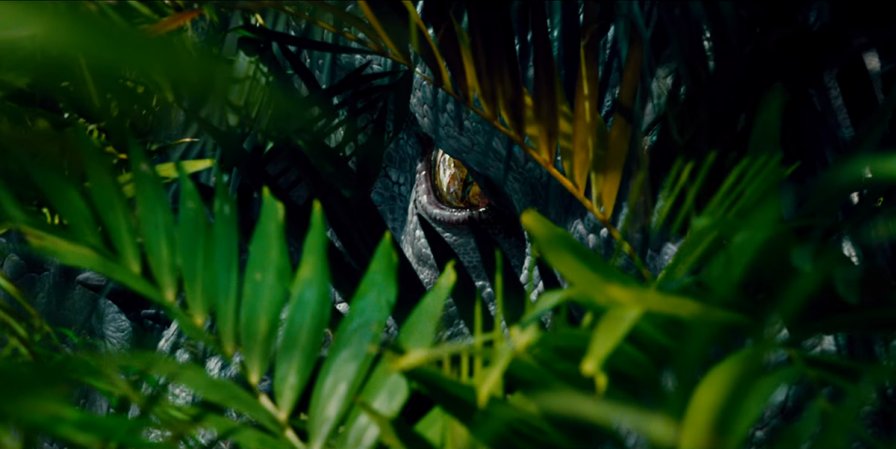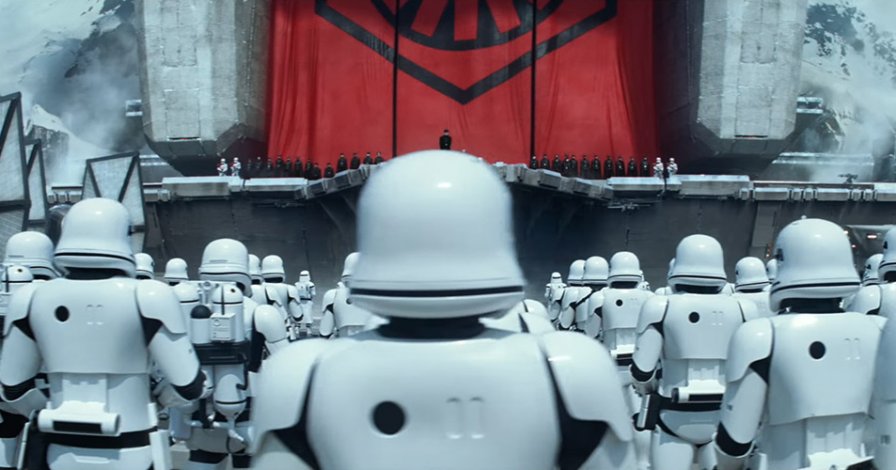Welcome to Screen Week! Join us as we explore the films and TV shows that kept us staring at screens. More from this series
“The new bible will be an eternal magnetic tape of a time that will have to reread itself constantly, just to know it existed.”
– Chris Marker, Sans Soleil
Introduction: Your Feature Re-Presentation
Coming soon: We fetishize our memory, counting out time in representations of what used to animate our psychic lives. We worship static images and guard ourselves against the diminishing returns of reiterative pleasures. Tirelessly, Hollywood indulges us, streamlines what once unfolded like an endless universe of play into a series of series, a cascade of formally conservative masculinist continuity exercises in exposition and suspended disbelief. These blockbusters tend to center their plots on male characters, fetishized militaristic action, and heteronormative romantic conventions, a standard responsible for the corporate-feminist surge of female reboots/recasts and the prominence of marketing blockbusters that “stand for equality.” It serves a fantasy, whether we need (and deserve) a vision more revolutionary. When the studios realized they could count on nostalgia to fund properties that are often too big to fail, they made it (im)personal.
And these reboots better feel personal, right? I have no desire to stack the stacks of printer paper covered in Blue Squadron dogfights buried somewhere in my parents’ basement against the endless more stacks of blue faces lining the Disney vault. I’m sure I had as much fun, fell as deeply in love with the new hope of The Force Awakens as you did. The enormously successful soft-reboot of the Star Wars saga (a trilogy of trilogies that in their entirety I was always already ready to believe in) is the real occasion for my anxiety about market-researched franchising, about the exploitation of our embarrassingly rewarding thrall to continuity. I spent however many hours pacing the halls of Cloud City, podracing through the rock arches of Tatooine, clashing lightsabers as Plo Koon, and now hugging Poe. And still, after my first viewing, so many of the soft-reboot’s symptoms metastasized across my memory of The Force Awakens.
The soft-reboot: Hollywood’s answer to fatigue from remakes and sequels. It pretends to be novelty in a world without fatigue, rather than singing to the mysteries of fatigue itself. It masks with measured appeals to cult sensibility and the promise of a bigger and better and forever future for the franchise. Old casts would foster fresh faces, old signs would be interpolated in shocking codes, old cues would signal new beginnings, old narratives would structure bolder stories, old universes would be explained over and against or elaborated into new canon. The formula is designed for maximum fulfillment of consumerist desire: we want the old new again and forever, as we always would. But my incorruptible, unconditional love of Star Wars was supposed to transcend that sort of conditioned and conditioning studio work, to capture me without using industrial tractor beams; it’s so near to my heart, so enmeshing.
One of the more memorable recent movies that so enmeshed me in its storytelling and sensuality was 2014’s Thou Was Mild & Lovely, which in its creeping lucidity only grew more feverishly disorienting and mesmerizing. Maybe an experimental “art film” (somehow also a coagulating genre) is an unfair or irrelevant reference for Hollywood’s biggest event pictures. But Mad Max: Fury Road, the next movie in my viewing life to come closest to that fevered fixation, is definitely a tentpole to be measured against and showcases an actually revolutionary ethics, not just a corporatized appeal to equality. Of course, for its singular madness, it will become itself a reboot model, and the industry standards will autocorrect in their way, likely without the radicalism.
That doesn’t have to read like defeat: Because there’s ample space for sensitive repetition and insurrection within this decade’s soft-reboot revolution, minor revelations at the marginal interstices of major productions. Because there’s a lot of love in this retelling of Star Wars for its millennial, captive audience. Because it’s so hard to read against the molecular monopoly of the Disney sandcastle, its series’ entries as granular as solvent particles, its totalitarian form(s) as monadic as a chain operation and an indivisible source. If this is all for the fans, what have the studios shown us we want? What is the work of art in the age of mediated reproduction?
In 2015, we watched self-aware blockbusters pander to their built-in bases with allusionary plots and exploit/employ identity politics for an imagined progressive audience. We watched some of the most striking visuals and soundtracks of mass cultural consciousness repeat themselves firmly enough to stir up something like marvels. And flickering in the sandstorm noise of the expanding blockbuster summer, there were screenshots that provided the barest relief from auto-pilot origin stories, that might even re-envision a cinematic “present present” for political and formal radicalism in a Hollywood mainstream obsessed with aesthetic pleasure of the first order.
But that’s not the first order. That’s the resistance.
The First Order

A brief history of franchises in 2010s reboots (some softer than others) on the silver screen: X-Men was given a prequel reboot that crossed over with its original franchise to retcon itself from the future for a coming recast. Star Trek was rebooted in an alternate continuity as explained by time-traveling Original Series Spock to then remake an original sequel. Rocky made a comeback as Mickey for a new franchise. The Fantastic Four got younger. Spider-Man was rebooted with new origins, only to be rebooted again in the Marvel Cinematic Universe (MCU) in 2016. The Ghostbusters will be a new (and all-female) set of SNL alums. Mad Max took a backseat to the furious fixation of a new protagonist. A new generation of Griswolds went on vacation to Wally World. Star Wars forced the old cast onto its new crew. Superman was rebooted from a reboot to battle a Batman rebooted from a reboot. Judge Dredd went slo-mo, Godzilla got bigger, The Planet of the Apes rose again, and Jurassic Park was re-opened for big, big business. Whew.
Hollywood would have us believe that this content circle unfolds in a straight line of progressive (technical, if not creative) achievement, like Ultron 2.0 ripping its originary self in half to proclaim how much bigger and better a vision it can dream up. And it works (toward profit/meaning)! The industry didn’t just turn cannibal in the past decade, but the insistent and successful redeployment of established franchises reached new heights in 2015. Michael B. Jordan alone starred in two reboots: the Oscar-nominated (though he was snubbed himself) Rocky revamp Creed and the sabotaged Fox flop Fantastic Four. The year’s top earners were record-breaking reboots Star Wars: The Force Awakens and Jurassic World. The eternal return on investment of well-established properties ensured that this history, as it has been since studio cinema’s industrial beginnings, is neverending.
Every property recalls itself, on our behalf, but something has changed for the Information Age. This decade’s reboots reproduce an uncanny cinema experience, subjecting us to movies that not only know what they are, but know that we know what they are, as an apology for convention. Postmodernism as the affective grounds for blockbusters, an acknowledgement of the mediated memories of audiences that asks us to detach ourselves from expectations at the same time it appeals to our sentimental attachment to the original. Its calculated cynicism washes the sensation from the screen. These films don’t actually upset the industry standard reboot formula, origin story, or hero’s arc (The LEGO Movie mocked it before couching its anti-capitalist, anti-blockbuster bent for normative family values), playing without plying a new relationship to film out of it, as if that battle were over. Metalepsis as a rhetorical, and especially ontological, device has a destabilizing transparency and performative quality, but the affective zone suspended or trespassed in these softly rebooted blockbusters tends toward a representation petrified, not mutative. Jurassic World is the most narratively exploitative and flagrant user of this self-awareness, structuring itself as a rigidly conservative balk at metalepsis. The impersonal inter-zoning of 2015’s premier dinosaur thrill ride is a monument to the corporate-pitched, self-aware intelligent design of Hollywood reboots.

One of our protagonists, Aunt Claire, is introduced giving a corporate pitch that might as well be describing the high concept pitched to Universal Studios, suggesting that audiences demand something bigger, never seen before, and (as the returning Dr. Henry Wu later says) cooler. Claire references the surge of information gathered from genetic research compared to archaeological digs, establishing a dichotomy between the reboot-design CGI of Jurassic World against the practical effects and handmade storycrafting of Jurassic Park. In the control room, Jake Johnson’s non-character later refers to how much cooler that Park was for its “authentic dinosaurs” and decries corporate sponsorship while wearing actual Jurassic Park/Jurassic Park apparel in a movie with a closeup of Beats headphones in its opening shots.
Jurassic World is seen through a child’s eyes, with competently common shot selection and sizing, as an attraction (the spectacle of the park) within an attraction (the spectacle of the film) within an attraction (the audience’s attachment to Jurassic Park). The child’s eye perspective evacuates a history with the Park, makes our subjects seem especially vulnerable to the plot’s dangers, and lowers the expectations for nuanced dialogue (though it shouldn’t). They’re vacant characters, pure witnesses to the action, emotional signposts like the crowd-characters in the Godzilla reboot or the onlookers on the doomed Republic capital in The Force Awakens. These witnesses are without contemplation, and so we pass by looking on without looking in.
The designed attraction for the new park and representative for the movie itself is the Indominus rex, the antagonist whose every feature and action is explained moments after we watch it. As the triumphant Jurassic Park theme swells, the spirit of the original movie is designed to come alive in the reboot as the superherofied T. rex teams up with velociraptors to overcome its unworthy, extra-artificial successor, the Indominus. That climactic dinosaur struggle isn’t the only third-act anxiety about the wholesomeness of Jurassic World compared to its original. Near the film’s end, the roughly inserted InGen military works to establish a new continuity by setting up conflicts for future sequels at the same time as it represents an outside force that would exploit the (un)natural beauty of the dinosaurs (like Universal coming in to inhumanely resurrect the franchise).
Director Colin Trevorow’s one visual motif is a closeup of feet landing with an ominous thud, revealed to be harmless (a raven’s claw in the snow of the central family’s front yard, a baby triceratops’s hoof in a petting zoo, maybe even Claire’s heels). It’s a sign of the movie’s own suspended suspense, where the tension is limited by the predictable attachments to the original movie (in winking references that remove you from the action or in rehashed plot beats that act like an affective GPS). Every time the chaos theory of a million moving parts starts to vibrate too wildly, studio hands ensure the rippling water in the cup on the dash doesn’t make a mess, that everything stays within the calculus of park logistics.
Fan Service in the Winking Wasteland

Every music cue, every reimagined scene or dialogue callback, every pin-light to our franchised memory projects impossibilities over the movie world. The cinematic universe becomes a closed conversation of established continuities and canons, a map of stars with no interest in the dark matter that influences it all from within and without. It’s an information overload, a supersaturation of the imagic screen solution that crystalizes its liquid content into a lower energy state. And it’s winking at us.
The Force Awakens is steeped in a fever pitch of fan service, from Han’s and Rey’s reference to the Kessel Run to stowing away on the Millennium Falcon, the ten-times-bigger Death Star (I know, Starkiller Base) to the resolutely 1970s aesthetic. I didn’t even realize how badly I wanted to watch one of our heroes fly a TIE fighter or Han borrow Chewie’s bowcaster. The moments that stood out most were the few that seemed of their own movie and not indebted to fan service, like Rey’s lonely life on Jakku sliding down sand dunes and preparing meals for herself. In that familiar rush of callbacks and character moments, there’s more than a touch of that metaleptic soft-reboot storytelling (the search for Luke’s legendary Force sensitivity is a MacGuffin for J.J. Abrams as much as the characters). While auto-piloting through Abrams’s pseudo-remake of A New Hope, did no one else miss the messy and unprecedented plotting of the prequels? George Lucas’s vision seemed to operate out of order with Hollywood; those movies hardly gave us anything we already knew we wanted.
More about: 2015
Welcome to Screen Week! Join us as we explore the films and TV shows that kept us staring at screens. More from this series



